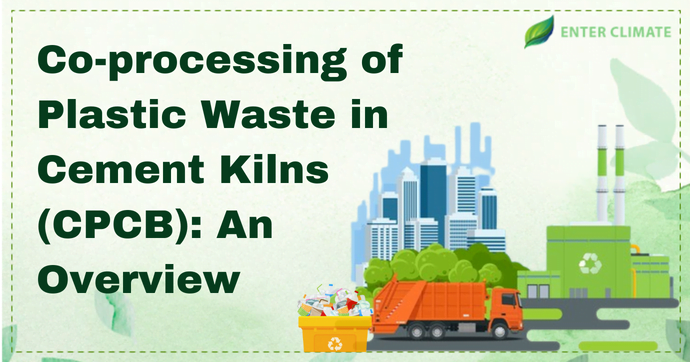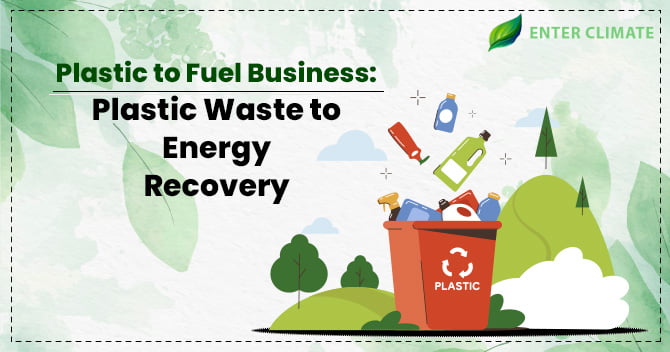Co-processing of Plastic Waste in Cement Kilns (CPCB): An Overview
 18 Nov, 2022
18 Nov, 2022 
The provisions that govern the co-processing of plastic waste in cement kilns were inserted in schedule 1 of the Environment (Protection) Rule, 1986 and were called the Environment (Protection) Third Amendment Rules, 2016. The amendment made co-processing a recognised method of waste management. This meant that using any waste as a raw material or energy source at the heating stage in cement manufacturing and replacing natural resources and fossil fuels in a guided manner would be permissible. Cement kilns are specialised kilns used in cement production and generally use coal as a fuel. Waste materials (including plastic waste)are used as a fuel for co-processing in these kilns and are referred to as “alternate fuels and raw materials” (AFR). Cement kilns are energy intensive, but they have an inherent advantage when it comes to co-processing as they are operated at high temperatures (around 1400’C and above) as the high temperature destroys the waste and leaves no residue behind. Therefore the Co-processing of Plastic Waste in Cement Kilnsby using plastic waste to burn as fuel during the heating stage of clinker is recommended, provided it meets the emission and residue criteria in the trial run. In this way, they can cut down on their thermal energy requirement and help reduce plastic waste. Although co-processing is a form of recycling, recyclable plastic waste must be recycled/reprocessed through other means. Only non-recyclable plastic waste (single-use plastic) can be co-processed in cement kilns as per the provisions laid in the Plastic Waste (Management) Rules[1]. Therefore, cement kilns consume only non-recyclable plastic waste as AFR.
Role of CPCB in Co-processing of Plastic Waste in Cement Kilns
However, for using plastic waste, more specifically single-use plastic, the procedure of energy recovery has been detailed by CPCB. As co-processing is a recognised method to fulfil EPR, therefore, cement kilns, after the co-processing, can issue EPR certificates to the e-waste recyclers from whom they source the plastic waste. The CPCB has laid down the entire procedure through the various guidelines that must be met in order to be able to trade EPR certificates. But first, to be eligible for the same, the cement plant has to complete a successful trial run on a particular material,i.e. plastic waste. It can then apply for regular permission for the co-processing to CPCB through the concerned State Pollution Control Board or Pollution Control Committee (SPCB/PCC).
Stages of waste management in case of co-processing
Co-processing is beneficial for Producers, Importers, and Brand Owners (PIBO), recyclers of plastic waste and cement manufacturers and the Municipal Department, who are significant stakeholders in co-processing. As PIBOs need to fulfil their EPR obligations, plastic waste recyclers must collect and dispose of non-recyclable and single-use plastic waste. They take it for co-processing and receive an EPR certificate in return for the co-processing of plastic waste in cement kilns by the cement manufacturer. This is beneficial waste management practice where all stakeholders benefit from the co-processing. However, the responsibilities of the stakeholders have been defined by the CPCB. The non-recyclable plastic waste goes through the following stages.
| Activity | Responsible Stakeholder |
| Collection and segregation of all categories of used plastic waste that is littered/dumped by Municipal Staff or Authorised NGOs or person | Municipal staff/authorised private person |
| Collection and storage of plastic waste from households, industrial establishments or other places in a covered yard by the authority Municipal Authority | Municipal staff/authorised private person/Agency |
| Shredding of plastic waste to the desired size, if required, using a shredder and storing in bags | Municipal staff/authorised private person/Agency |
| Signing the MoU with cement kilns for the management of plastic waste by co-processing | Municipal Authority or Urban Development Department |
| Transporting plastic waste to kilns and maintaining the record | Municipal Authority or Authorized Private Agency |
| Receiving the plastic waste from Municipal Authority and maintaining the record. | The staff of Cement Plant |
| Collection of the plastic waste under Extended Producer Responsibility (EPR) and transporting it to the cement plant for co-processing | Producer, Brand Owner or Importer |
| Monitoring of the implementation of PWM Rules by assigning the responsibility to a nodal officer | Concerned SPCB / PCC |
| Co-processing of Plastic Waste in Cement Kilns as Alternative Fuel & Raw Material (AFR) in cement kilns and monitoring/controlling emissions as per set standards. | Cement Plant |
| Monitoring of emissions and sharing the data with concerned SPCB/PCC and CPCB | Cement Plant |
How to Register for Co-processing of Plastic Waste in Cement Kilns
Let’s understand the registration process needed for the co-processing of plastic waste.
- The application should be in the prescribed format and details of the trial run conducted for co-processing plastic waste in cement kilns.
- Upon receipt of the application, CPCB will submit it to a committee for its recommendation.
- The applicant of the cement manufacturing plant may be called to make a presentation before the committee.
- On recommendations of the committee, CPCB may grant or refuse permission for regular co-processing within 30 days.
Conclusion
Co-processing of Plastic Waste in Cement Kilns is a more environmentally friendly and sustainable method of waste disposal as compared to landfilling and incineration because of reduced emissions and no residue after the treatment. Promoting this approach is a win-win for the planet that is choking on plastic waste. By converting plastic to energy, these cement kilns, keep the waste out of landfills and oceans while allowing cement plants to move away from burning coal, a significant contributor to global warming. As plastic waste has material and energy value, the cement kiln co-processing option provides this option of gainfully utilising wastes as resources in cement manufacture without impacting emissions or product quality.
Read our Article: Overview of the Legal Regulations for Setting up Plastic Injection Moulding Business
Categories
Latest Post
Air pollution Dispersion Modeling
Natural Disaster Risk Assessment
Endangered Species Protection
Aquifer Recharge Project
Sustainable Sanitation Solutions














